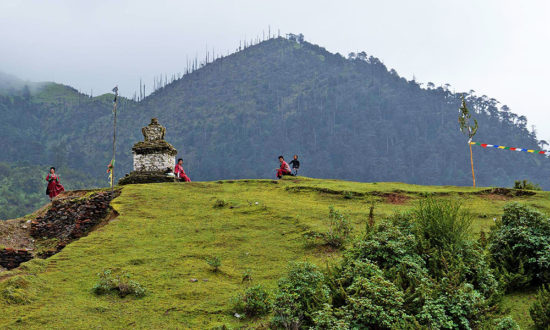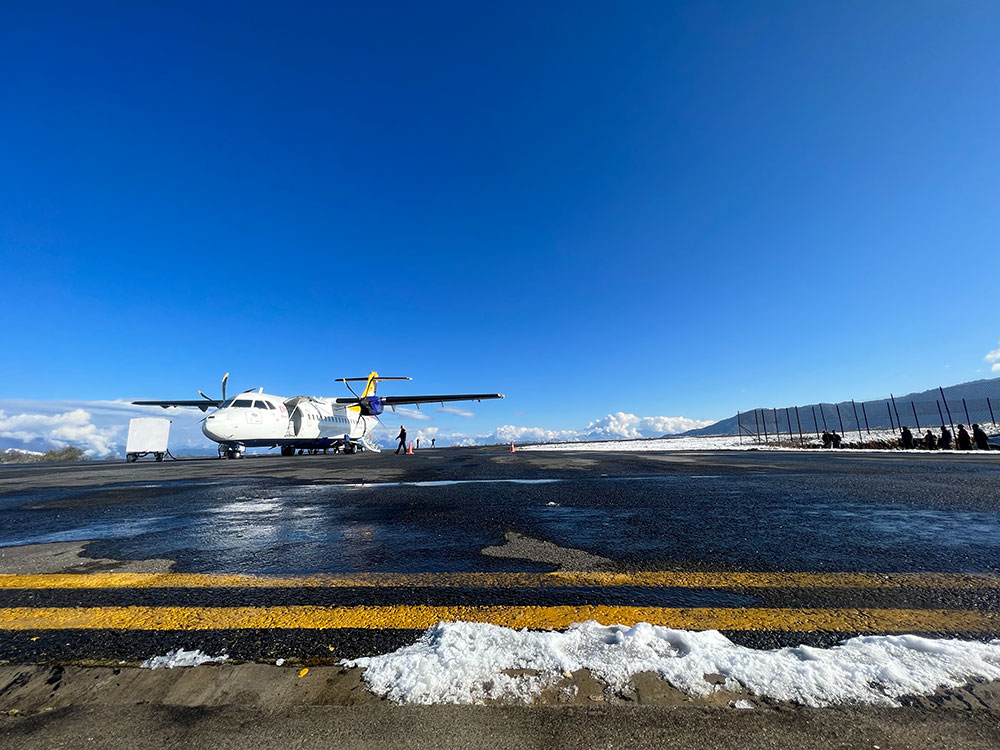Trashigang is all about legendary history, thriving nomadic culture and unique social practices. A destination brimming with extraordinary experiences for adventurous traveler.
Trashigang has been the political stronghold of Eastern Bhutan for over 300 years. Even today, it is one of the largest Dzongkhags in the country and has an area of over 2204 square kilometers. Characterized by high forest cover, endemic flora and fauna, flourishing agriculture, rich weaving culture and semi-nomadic community, the district has diverse and authentic Bhutanese experiences to offer for travelers who haven’t experienced the eastern pockets of Bhutan yet.
Trashigang Dzong
Known as ‘The Fortress of the auspicious hill’, Trashigang Dzong was built in 1659 to defend against Tibetan invasions. The historic significance of this dzong is its strategic position on the spur overlooking Drangmachhu River that has visually suppressed invading Tibetan armies. It is believed that the view of the dzong forced them to retreat, as the soldiers said, “the fortress is not on the ground, but looks like it is a sky fortress”. As highlighted in this oral history, the dzong does look high above in the sky when viewed from the chazam (the iron bridge) below.
Yonphula Domestic Airport
The military airfield of 1960s was developed into a domestic airport in 2012. Standing at 9000 feet above sea level, this airport connects people of six districts of eastern Bhutan to west, central and south-central regions. DrukAir, the Royal Bhutan Airlines operates its flight service from Paro International airport, Bumthang and Gelephu domestic airport to Yonphula on regular basis.
Sherubtse college
Bhutan’s premier institute, Sherubtse College was founded as a public school in 1968 and became a junior college in 1976. It became the oldest and largest constituent college of the Royal University of Bhutan in 2003. Spreading over a sprawling lush green campus with an authentic rural ambiance, Sherubtse College is only about 10 minutes’ drive away from the Yongphula airport on the way to Trashigang Dzong. Kanglung is a small town with few shops, Zangthopelri and beautiful college campus that makes travelers worth stopping by for a few hours.
Rangjung Woesel Choeling Monastery
The elders in the locality vividly remember that the present Trashicho Dzong was proposed to be constructed on the hillock where present day Rangjung Woesel Choeling Monastery is located. They believe that the local spirit at that time obstructed construction of the Dzong and finally diverted to Thimphu dzongkhag. The monastery was founded by His Eminence Dungsey Garab Dorje Rinpoche in the year 1989 and became an iconic place for worshiper of Dudjom New Treasure Lineage. The daily prayers of monks and nuns along with melodious sound of religious instruments keeps small satellite town of Jangjung lively and free of misfortunes. Driving from Trashigang to SWS headquarters in Phongmay, one will be tempted to visit the monastery and meet with the monks and nuns.
Sakteng Wildlife Sanctuary
Expanded within the altitude range of 1700-4100 meters above sea level, Sakteng Wildlife Sanctuary (SWS) represents the diversity of Eastern Himalayan terrestrial ecosystem – alpine meadows, temperate and ward broadleaf forests. Adorned with extraordinary beauty of 35 species of rhododendrons, the sanctuary is popularly known as ‘paradise of rhododendrons’ in Trashigang. The presence of globally threatened and endangered species such as Red Panda (Ailurus fulgens), Himalaya Serow (Capricornis sumatraensis thar), Wild Dog (Cuon alpinus), Himalayan Black Bear (Ursus thibetanus) and Musk Deer (Moschus moschiferus) add glory to richness of the sanctuary. The mutual thriving of semi-nomadic pastoralist locally known as ‘Brokpa’ confirms unique feature of the sanctuary where human and wildlife can live together. Merak and Sakteng forms core custodians of the wildlife sanctuary with their aged old traditions of yak herding in the sacred mountains of Nakchungla. This mountain between Merak and Sakteng villages is historically known for causing altitudinal sickness to both horse and human. It is a moderately tough walk and experience the beauty of alpine meadows.
Radhi village – the rice bowl of Trashigang
Known as the ‘Rice Bowl of the East’ Radhi village is characterized by vast expanse of paddy fields. Radhi is biggest producer of local rice in Trashigang. The other attractions of this village comprising of 200 households is textile production using raw silk locally known as Bura textiles. All textiles produced in Radhi are made using the traditional back-strap loom and traditional dyes. As a result, Radhi village produces some of the most authentic high-quality raw silk textiles to be found anywhere in Bhutan. For the travelers wishing to halt a night and enjoy the agriculture or textile tour around the villages, there is village homestay with a very reasonable price and friendly host at Radhi Panthang.

Highlanders
Nomadic culture
Merak and Sakteng villages are home to the semi nomadic indigenous people known as the Brokpas (highlanders). Merak means land created from slash and burn and Sakteng literally means bamboo field. Men wear a thick red wool coat and women wear a red and white striped dress. The name of Sakteng Wildlife Sanctuary is derived from the Sakteng Village since this two villages form the cultural and social heritage of the sanctuary. Livestock rearing and seasonal movements of the household from mountains to lowland is peculiar lifestyle of the highlanders. Both the villages are connected by motorable road and it takes half day to drive from Trashigang.
Article contributed by
Jigme Dorji
This series is sponsored by Ecotourism Project “Mainstreaming Biodiversity Conservation into the Tourism Sector in Bhutan” funded by GEF-UNDP through Tourism Council of Bhutan, RGoB.


